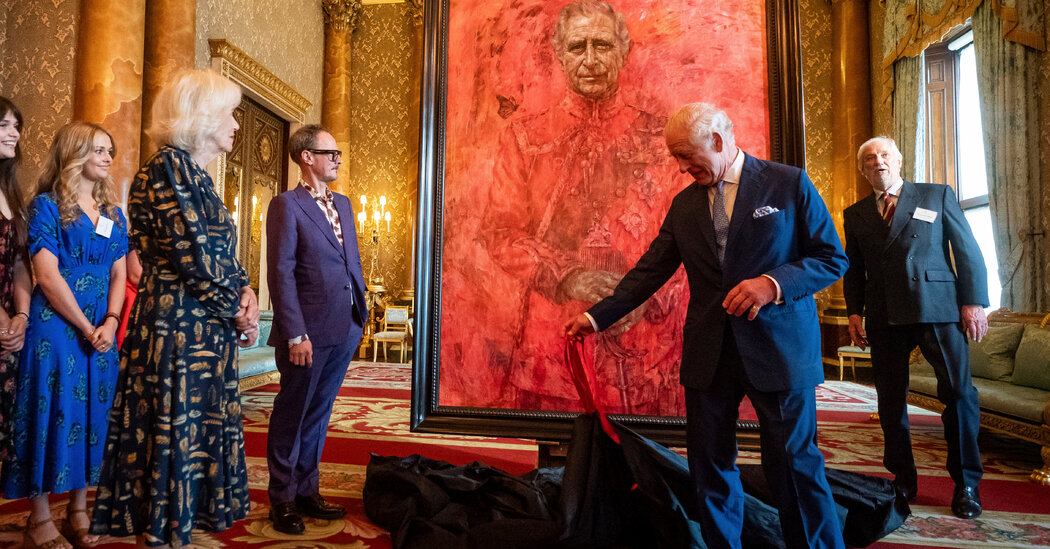
Royal portraits, as a rule, tend to be fairly staid, predictable affairs. Full of symbolism, sure, but generally symbolism of the traditional, establishment kind: symbols of state, of office, of pomp and lineage.
Which is why the new official portrait of King Charles III by Jonathan Yeo, the first since the king’s coronation, has created such a controversy.
A larger-than-life (7.5 foot-by-5.5 foot) canvas, the portrait shows the king standing in his Welsh Guards uniform, hands on the hilt of his sword, a half-smile on his face, with a butterfly hovering just over his right shoulder. His entire body is bathed in a sea of crimson, so his face appears to be floating.
Though the butterfly was apparently the key piece of semiology — meant, Mr. Yeo told the BBC, to represent Charles’s metamorphosis from prince to sovereign and his longstanding love of the environment — it was the painting’s primary color that almost instantaneously gave new meaning to the idea of “seeing red.” It was practically begging for interpretation.
“To me it gives the message the monarchy is going up in flames or the king is burning in hell,” one commentator wrote under the royal family’s Instagram post when the portrait was unveiled.
“It looks like he’s bathing in blood,” another wrote. Someone else raised the idea of “colonial bloodshed.” There were comparisons to the devil. And so on. There was even a mention of the Tampax affair, a reference to an infamous comment by Charles revealed when his phone was hacked during the demise of his marriage to Diana, Princess of Wales.






